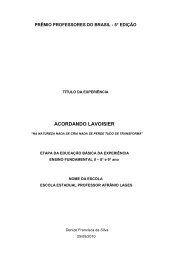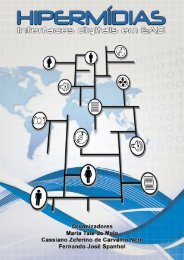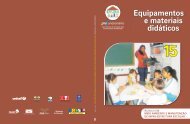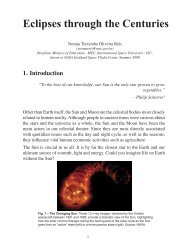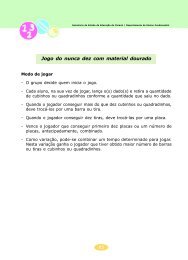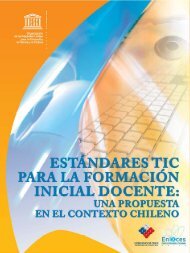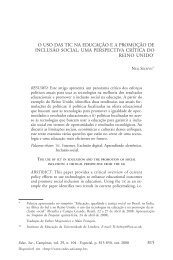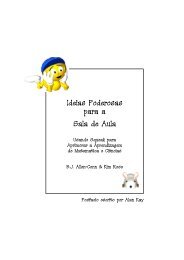BIO-CULTURAL COMMUNITY PROTOCOLS - Portal do Professor
BIO-CULTURAL COMMUNITY PROTOCOLS - Portal do Professor
BIO-CULTURAL COMMUNITY PROTOCOLS - Portal do Professor
Create successful ePaper yourself
Turn your PDF publications into a flip-book with our unique Google optimized e-Paper software.
CHAPTER 5<br />
Bio-cultural Community Protocols<br />
and Protected Areas<br />
Barbara Lassen, Gary Martin and Olivier Rukun<strong>do</strong> 1<br />
1. People and Protected Areas: A Paradigm Shift<br />
Significant changes have taken place in international<br />
conservation policies in the last few years. There is growing<br />
awareness of the role of indigenous peoples and local<br />
communities (ILCs) in the management of protected areas<br />
designated by governments, and equally, of the importance<br />
of sites and landscapes managed by communities themselves.<br />
The contribution of these communities and their traditional<br />
knowledge, innovations and practices (TK) to the conservation<br />
and sustainable use of biodiversity in and around protected<br />
areas is gradually being recognized. Yet this paradigm shift<br />
from exclusionary protection towards inclusive and local<br />
participatory management models poses many challenges.<br />
Integrating governmental and private conservation institutions<br />
and management practices with local values and customary<br />
governance of biodiversity is a complex task for all actors<br />
involved. It involves multifaceted issues of rights and<br />
responsibilities, land tenure, contemporary and customary<br />
knowledge, relevant institutions, and sharing of costs and<br />
benefits. 2<br />
Bio-cultural community protocols (BCPs) can play<br />
a significant role at this interface of these issues, assisting<br />
ILCs to assert their bio-cultural values and rights to engage<br />
with protected area authorities and protect their TK.<br />
This chapter briefly explores the interplay between protected<br />
areas, ILCs and TK within the framework of the Convention<br />
on Biological Diversity (CBD) and the Programme of Work on<br />
Protected Areas (PoWPA). It then evaluates the contribution<br />
that BCPs can make to improving ILCs’ participation in two<br />
types of protected areas, namely: collaboratively managed<br />
protected areas (CMPAs) and indigenous and community<br />
conserved areas (ICCAs).<br />
1.1 Protected Areas and Traditional<br />
Knowledge under the CBD:<br />
Making the Link<br />
The UN Convention on Biological Diversity (CBD) situates<br />
protected areas as a central instrument to achieve in situ<br />
conservation. As stated in Article 2 of the CBD, a protected<br />
area is “a geographically defined area, which is designated or<br />
regulated and managed to achieve specific conservation<br />
objectives”. More specifically, Article 8 of the CBD clearly calls<br />
on each Contracting Party to:<br />
(8a) Establish a system of protected areas or areas where<br />
special measures need to be taken to conserve biological<br />
diversity;<br />
(8b) Develop, where necessary, guidelines for the selection,<br />
establishment and management of protected areas or areas<br />
where special measures need to be taken to conserve<br />
biological diversity. 3<br />
1 . Barbara Lassen, Programme Officer, Implementing the Biodiversity Convention, Deutsche Gesellschaft fuer Technische Zusammenarbeit (GTZ); Gary Martin, PhD, Director<br />
of the Global Diversity Foundation, and Lecturer, Centre for Biocultural Diversity, School of Anthropology and Conservation, University of Kent; and Olivier Rukun<strong>do</strong>,<br />
Legal Research Fellow, Centre for International Sustainable Development Law, and Associate, Natural Justice: Lawyers for Communities and the Environment.<br />
2. Kothari, Ashish, Protected areas and people: the future of the past, in: PARKS Vol. 17 No 2, 2008, p. 23-34.<br />
3 . Article 8a and 8b, text of the Convention available at, http://www.cbd.int/convention/articles.shtml?a=cbd-08.<br />
52





